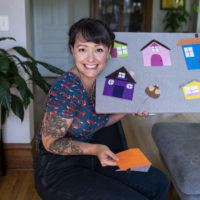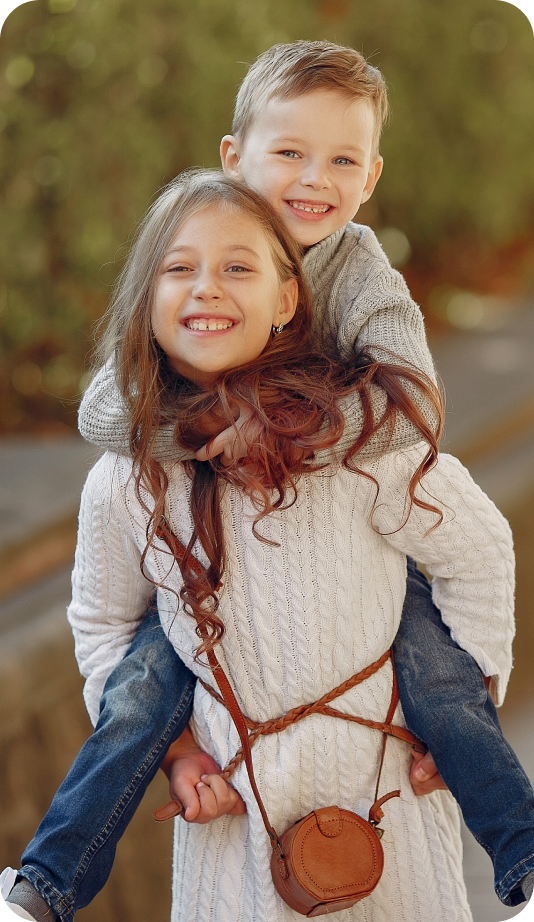Here’s Why You Should Sing a Lullaby To Your Baby
Since the response to sound is one of the most highly developed abilities in the newborn infant, children need to be musically nurtured from birth. Thomas Cabaniss, creator of the Lullaby Project at Carnegie Hall will give us few tips on creating and sharing lullabies with our own babies to build connection and brain cells.
Show Highlights:
00:45 – What is the Lullaby Project at Carnegie Hall?
02:05 – How does a lullaby impact a baby’s brain development?
03:17 – Does it matter if the mother has a “bad” singing voice?
06:10 – Tips on how to create your own special lullaby for your baby
08:20 – Inspirational stories of young mothers who have gone through the lullaby program
SUBSCRIBE to our YouTube channel: ⭐ https://goo.gl/YmZhpx
Full Interview Transcript
Kelly: Have you ever felt inadequate creating singing a lullaby to your baby? Today, we are here with Thomas Cabaniss a composer, teaching artist and co-founder of the Lullaby project at Carnegie Hall. A program that pairs musicians with new and expectant mothers to create personal lullabies for their babies. He’s here to give us tips about how to create and share a lullaby with your own baby to build connection and brain cells. Thomas thank you so much for being here.
Thomas Cabaniss: Thank you.
Kelly: What is the Lullaby project?
Thomas Cabaniss: So it started seven years ago working at a hospital in the Bronx, Jacobi hospital. We were doing song writing workshops with kids who had chronic HIV and that song writing project was very inspiring visit to the hospital community and it so happened that one day members of the obstetrics unit came and attended one of the song writing presentations and afterwards they said this is amazing! This is terrific. We would love something like this especially for our pregnant teens who are on our unit because they have a special challenge in attaching to their baby and attaching to their child. Could you consider doing such a song writing project as this with them? And, we said well we could absolutely! But also what about lullabies it seems at that moment that there was a chance to do something with the floor level lullaby that might do exactly what they were looking for – which is to help increase the bond to a young parent and a child.
Kelly: You have done some research papers on this, how does music impact an infant’s development?
Thomas Cabaniss: What we really discovered is that brain growth starts of course in utero that children are far more sensitive to their environment than we realize. That they’re listening to things and feeling things right from the beginning of conception and that goes through birth and we know the moment that a child comes out there is a very special relationship that the child has to the mother’s voice. Why? Because the voice has really been kind of you know it’s been the physical instrument that the child has gotten used to. So, often you know, they will say, “oh I can’t sing” or “I don’t sing” or “my child doesn’t want to hear my voice”. But the neuro-scientifically that’s not true. Regardless of the musical talent, the baby really does want to, and responds to, the mother’s voice in a way that is (I hate to say it, as I’m a father), but very different from the father’s voice because they’ve actually been living inside the instrument for the nine months of pregnancy.
Kelly: That was the question I had: So my husband is a professionally trained opera singer and I am literally tone deaf, so my fear is that my children may be better off listening to a CD of Pavarotti versus my singing voice. What is the impact if a mom has a bad singing voice on a feature musicality of their child?
Thomas Cabaniss: And we know that it’s more important that this special quality and timbre of your voice be present in the interaction, it’s more important than whether you’re singing in tune, it’s more important than if you’re you know if you are feeling insecure. What’s most important is the special sound quality of your voice. Of your speaking voice and your singing voice. So I would just I would say put the CD’s away and talk and read and sing to your child. That’s what neuroscience tells us. That’s really more important that anything. But it’s good that you’ve got some opera singing in your family.
Kelly: I know! I think my son got the opera lungs. He’s got the loud opera voice. So, lullaby in particular why a lullaby, versus of other kind of music for stimulation?
Thomas Cabaniss: Well I think multi-music is great for stimulation. But what is special about a lullaby it is that it is this intimate space where it’s soothing is important, that’s the goal right? It puts the child sleep or it is to soothe their nerves to calm them. That’s really very important and so it becomes a space that the mother and the child, or it doesn’t have to be the mother, you know, now that the child was born, it could be the father, it can be the family, it could be a sister or brother. But if the lullaby space is this place that we’re really you’re able to share intimate and be close. The form itself can contain a lot. It really can contain encouragement, a hope for future wishes. It can be a place where the lullaby singer is expressing anything, frustration, love and connection. There’s so many different possibilities and so what’s nice about it is that it’s short form, to creating a lullaby. You don’t have to go to song writing school. Right? All you need is a little phrase. You didn’t even necessarily need words, right? Because sometime some of the most beautiful lullabies are the ones that are just hummed or whistled, or sung with syllables. It doesn’t really have to be with words, though words you know obviously create a lot of possibility.
Kelly: There’s a lot of moms who want to sing to their babies, but they don’t for various reasons. Can you help give us a step by step of how we would that at home – if they don’t know really what to do or how to do it?
Thomas Cabaniss: Sure! One of the things that we encourage moms to do in the lullaby project is to actually start from a place you know that you know where they’re comfortable. And one of those places might be swaying. Right? That’s something we all do to help our kids fall a sleep. I don’t know. I don’t know how you’ve experience it, but when I was a new dad I was constantly racking back and forth. I felt like I lived on a ship. All right. So to start this sway until they find a sound that might accompany that. It might not be you know full blown song yet right but if your swaying back and forth. (musical hum)
Thomas Cabaniss: Just something as simple as a little humming and sway can get you started. If the child is born and has been named, use their name because it could be we have this really beautiful lullaby that was written in the project that just uses the name of the child. The child was Noah – and it was all just really based on the child’s name. So you’ve got a humming going and then you have just a name you’ve already got the building blocks for personalized lullaby. Now, maybe you want to add some things from around the room. Right? You got some flowers back here you know. And so it could be Noah, Noah, you got flowers and a bunny, there’s a bunny there. Right.
Thomas Cabaniss: So just improvising using really of visual stimuli from around the room and you can already feel a little lullaby and that could be part of your repertoire. Right. Maybe you want to sing some Twinkle, Twinkle. You probably remember a whole host of songs that your whole family share.
Kelly: Can you share any inspirational stories of some of the women who have gone through the Lullaby Project and how with either benefited them with the bond with their child or maybe impacted the child’s development?
Thomas Cabaniss: Sure! But you know in our very first Lullaby Project, we were working with a group of teenagers they were anywhere from 15 to 17 years old and they were pregnant. Many of them were very self-judgmental – they had encountered a lot of you know judgment from their peers, from their family and you know complicated time. And so one interesting thing that happened was that the group when they were writing individual lullabies for their children, but as they talk to each other and as they encourage each other, they became friends and they realized that they had similar kinds of issues outside of the lullaby group, they just formed a little network with one another. The truth is that is it’s not that different if you think about most, many middle class parents where they have some kind of Lamaze or breathing class or some kind of prep class for going through the birth process.
Well this provided that kind of community for them and it meant they had somebody to talk to. About a year or two later, we found out that once they had become eighteen, these single mothers actually got an apartment together and they lived together and they learned each other’s lullabies and they could sing each other’s lullabies. And they had a little group home that they created because they were having difficulties with their own families. They were working, they were supporting their children and they were using lullabies as sort of glue. And we thought that was an amazing outcome and an unexpected one given that all we were really trying to do was to get them to sing a song.
Kelly: So where can people find more information about the Lullaby project?
Thomas Cabaniss: Just go to Carnegiehall.org/lullaby that will open you to a lot of different places – we have a sound cloud site with over 150 lullabies that have been compiled over the last five, six years from all over the country. We’re constantly adding content to this throughout the years. If people are interested, they can also contact us through carnegiehall.org/lullaby.
Kelly: Great! Thomas thank you so much for being here, it was a real honor. And now I feel more confident in being able to sing to my own children.
Thomas Cabaniss: Thank you, thank you so much.

About Thomas Cabaniss
Thomas Cabaniss was born in Charleston, SC in 1962. He writes for opera, theater, dance, film, and the concert stage. He lives in New York City, where he teaches at The Juilliard School and leads arts education projects through the Weill Music Institute at Carnegie Hall. He was Director of Education for the New York Philharmonic under Kurt Masur and Lorin Maazel and served as Music Animateur for the Philadelphia Orchestra under Christoph Eschenbach. He is a member of ASCAP and an Associate Artist with Target Margin Theater, David Herskovits, Artistic Director.
Thomas helped initiate The Lullaby Project at Carnegie Hall. For more information about the Lullaby Project, visit: www.CarnegieHall.org/Lullaby




